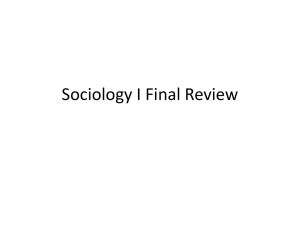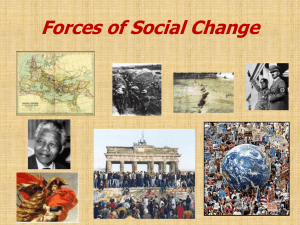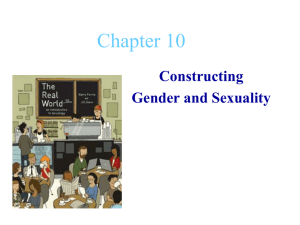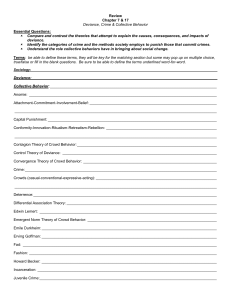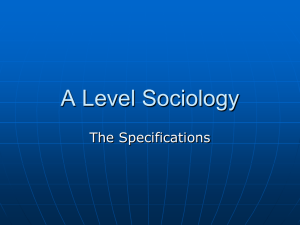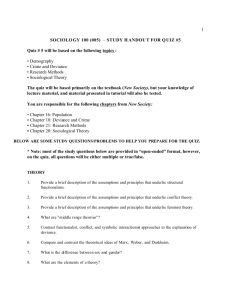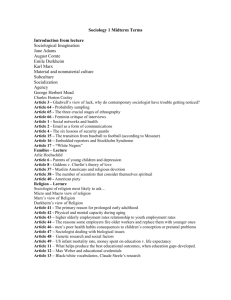sociology i - Madison County Schools
advertisement
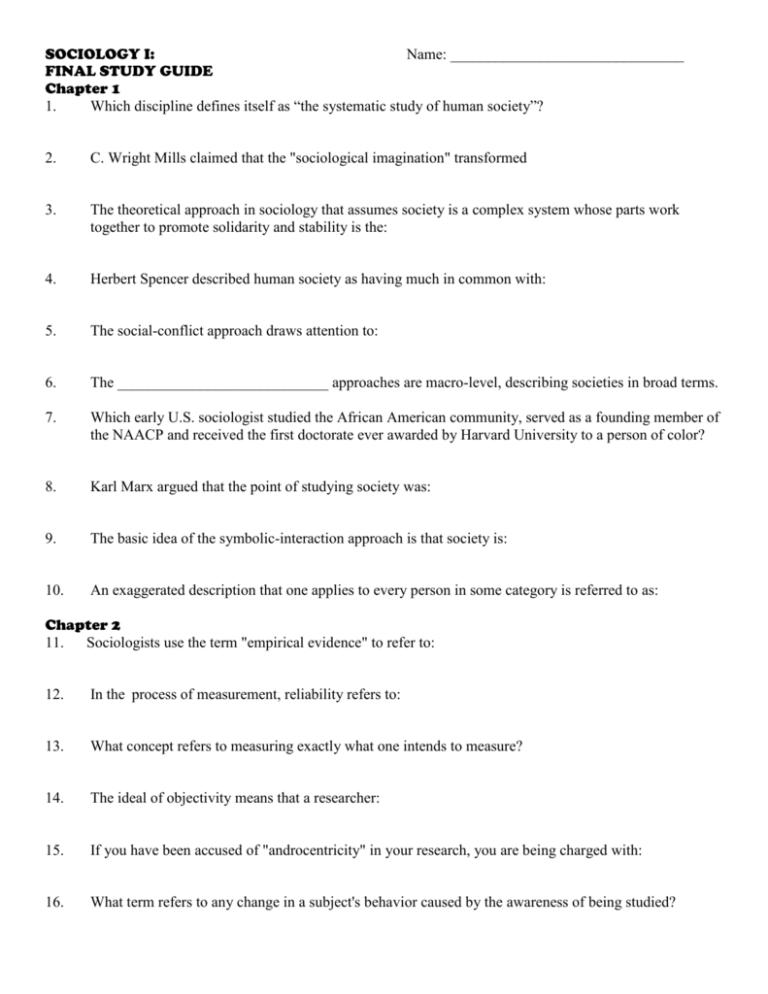
SOCIOLOGY I: Name: _______________________________ FINAL STUDY GUIDE Chapter 1 1. Which discipline defines itself as “the systematic study of human society”? 2. C. Wright Mills claimed that the "sociological imagination" transformed 3. The theoretical approach in sociology that assumes society is a complex system whose parts work together to promote solidarity and stability is the: 4. Herbert Spencer described human society as having much in common with: 5. The social-conflict approach draws attention to: 6. The ____________________________ approaches are macro-level, describing societies in broad terms. 7. Which early U.S. sociologist studied the African American community, served as a founding member of the NAACP and received the first doctorate ever awarded by Harvard University to a person of color? 8. Karl Marx argued that the point of studying society was: 9. The basic idea of the symbolic-interaction approach is that society is: 10. An exaggerated description that one applies to every person in some category is referred to as: Chapter 2 11. Sociologists use the term "empirical evidence" to refer to: 12. In the process of measurement, reliability refers to: 13. What concept refers to measuring exactly what one intends to measure? 14. The ideal of objectivity means that a researcher: 15. If you have been accused of "androcentricity" in your research, you are being charged with: 16. What term refers to any change in a subject's behavior caused by the awareness of being studied? 17. A smaller number of people used to represent an entire population is called a: 18. In a questionnaire, asking respondents to identify their income level from a number of possible categories represents ______________________________________. Chapter 3 19. As a part of human culture, religion is an example of: 20. What is the term for the beliefs, values, behavior, and material objects that together constitute a people's way of life? 21. ___________ distinguish between right and wrong; _______________ distinguish between right and rude. 22. Elements of social control include: 23. The practice of understanding another culture on its own terms and using its own standards is called: 24. Cultural universals are cultural traits that: 25. Which theoretical approach points out that the sexual "double standard" is found around the world? 26. The theoretical approach that highlights the link between culture and social inequality is the: Chapter 9 27. Which concept refers to "the recognized violation of cultural norms"? 28. "Crime" differs from "deviance" in that crime: 29. Name three functions of deviance noted by Emile Durkheim. 30. The basic idea behind labeling theory is that: 31. What concept did Erving Goffman use to refer to a powerful and negative label that greatly changes a person's self-concept and social identity? 32. A hate crime is defined as: 33. In legal terms, a crime is composed of which two components? 34. Edwin Lemert described "primary deviance" as: Chapter 10 35. Social stratification refers to: 36. A caste system is defined as: 37. If you have a job that involves manual labor, you are doing: 38. Work involving mostly mental activity is called: 39. Laura wears an expensive dress to the party to impress her friends. A sociologist might say she is engaging in: 40. The idea that social inequality benefits society is associated with the: 41. The idea that social inequality is harmful and divides society is associated with the: 42. According to Karl Marx, differences in wealth and power between the capitalists and proletarians necessarily lead to: Chapter 8 43. Which concept refers to the biological distinction between males and females? 44. One norm found everywhere is the incest taboo, which refers to: 45. When did the sexual revolution begin? 46. The effect of the sexual counterrevolution was: 47. The weight of evidence indicates that sexual orientation is rooted in: 48. In global perspective, prostitution is most common in: 49. Prostitution is regarded by many people in the United States as a: 50. Which theoretical approach points to the ways in which sexuality is linked to social inequality?
